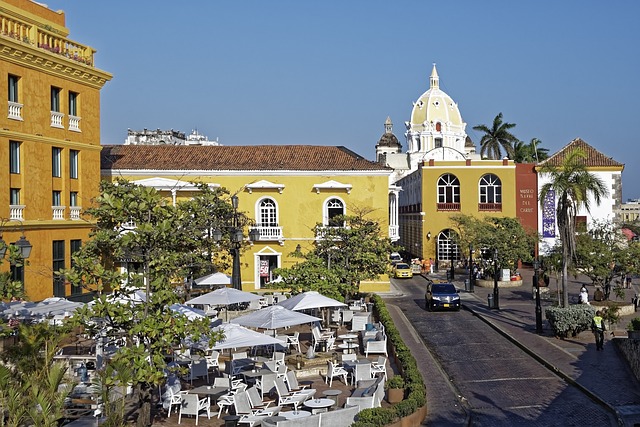Cartagena de Indias, a Caribbean gem in Colombia, is renowned for its stunning historic center encircled by monumental walls. These fortifications, dating back to the colonial era, have witnessed centuries of history and played a crucial role in protecting the city. This article explores the history and significance of Cartagena’s walls and their impact on the city’s identity.
The Early Attempts at Protection
The founding of Cartagena in 1533 by Pedro de Heredia marked the beginning of a history of constant defense. In its early years, the city faced threats from pirate attacks and rival colonial powers. Initial attempts at fortification included simple walls and watchtowers, but as the port grew more strategic and valuable, the need for a more robust defense became evident.
The Development of the Walls
The construction of the walls as we know them began in the mid-16th century. Spanish colonial authorities recognized the strategic importance of Cartagena and decided to bolster the city’s defenses. The work was overseen by military engineers such as Simón de Bolívar and Antonio de Arévalo, who designed a system of walls and fortifications that combined defensive and aesthetic elements.
The design of the walls included a combination of stone walls, bastions, moats, and forts. These structures were built using locally quarried limestone and were designed to withstand artillery attacks and prolonged sieges. The main wall extended over 11 kilometers, encircling the old city and protecting its most vulnerable points.

Fortifications and Bastions
Among the most notable fortifications is the Castillo de San Felipe de Barajas, the most formidable and advanced of Cartagena’s defenses. Built between 1536 and 1657, the castle offered a strategic panoramic view and featured a network of tunnels and underground chambers designed to store provisions and protect troops.
Other important bastions include the Baluarte de San Diego and the Baluarte de Santo Domingo. These bastions not only served a defensive function but also acted as watchpoints and control points over the port and access routes to the city.
Sieges and Battles
The walls of Cartagena played a crucial role in several significant battles. One of the most famous sieges was in 1741 when a British fleet led by Admiral Edward Vernon attempted to capture the city. Despite the attackers’ numerical superiority, the resilience of Cartagena’s defenders and the strength of the walls allowed the city to withstand the siege for over two months.
Another key moment in the history of the walls was the Battle of Cartagena in 1815, when the city defended itself against a renewed invasion attempt during the Latin American independence wars. The walls and fortifications once again demonstrated their effectiveness in protecting the city.
The history of Cartagena’s walls is a testament to the ingenuity and determination of their builders and defenders. These fortifications not only protected the city from attacks during the colonial era but have also come to symbolize the historical and cultural richness of Cartagena. Today, they continue to be a source of pride for Cartagena’s residents and a fascinating destination for visitors, offering a window into the past and a reminder of the importance of defense and perseverance.



